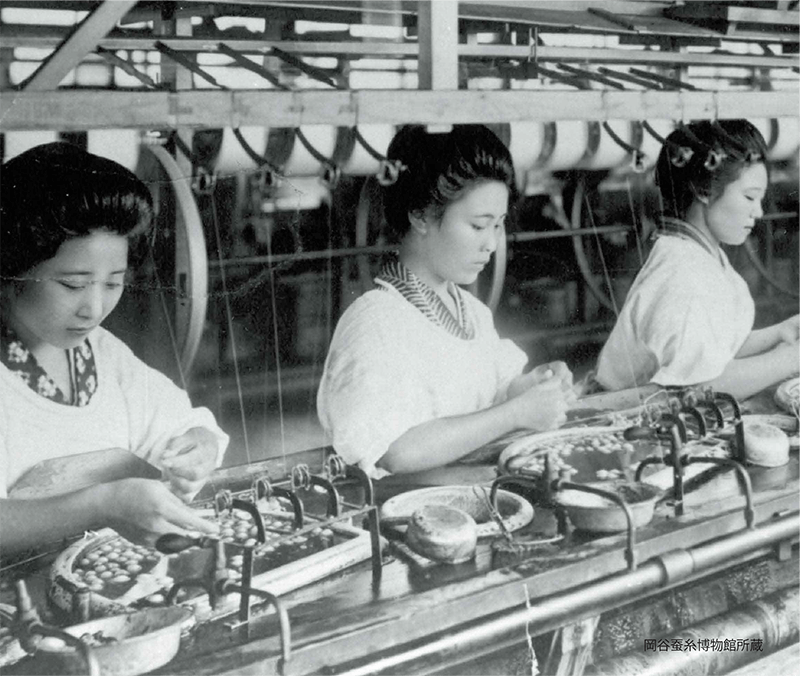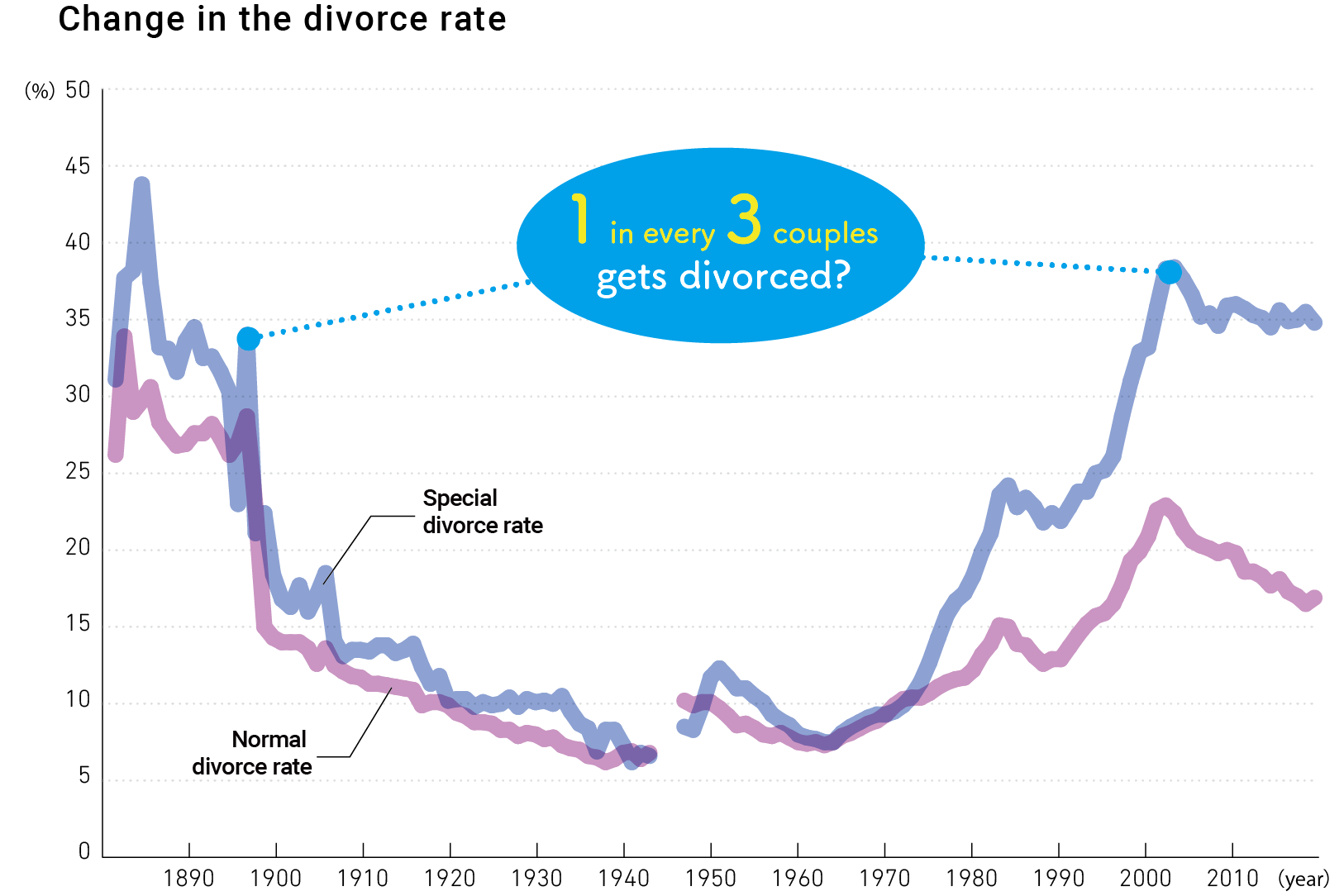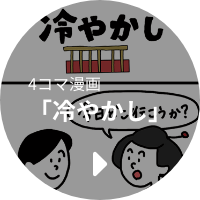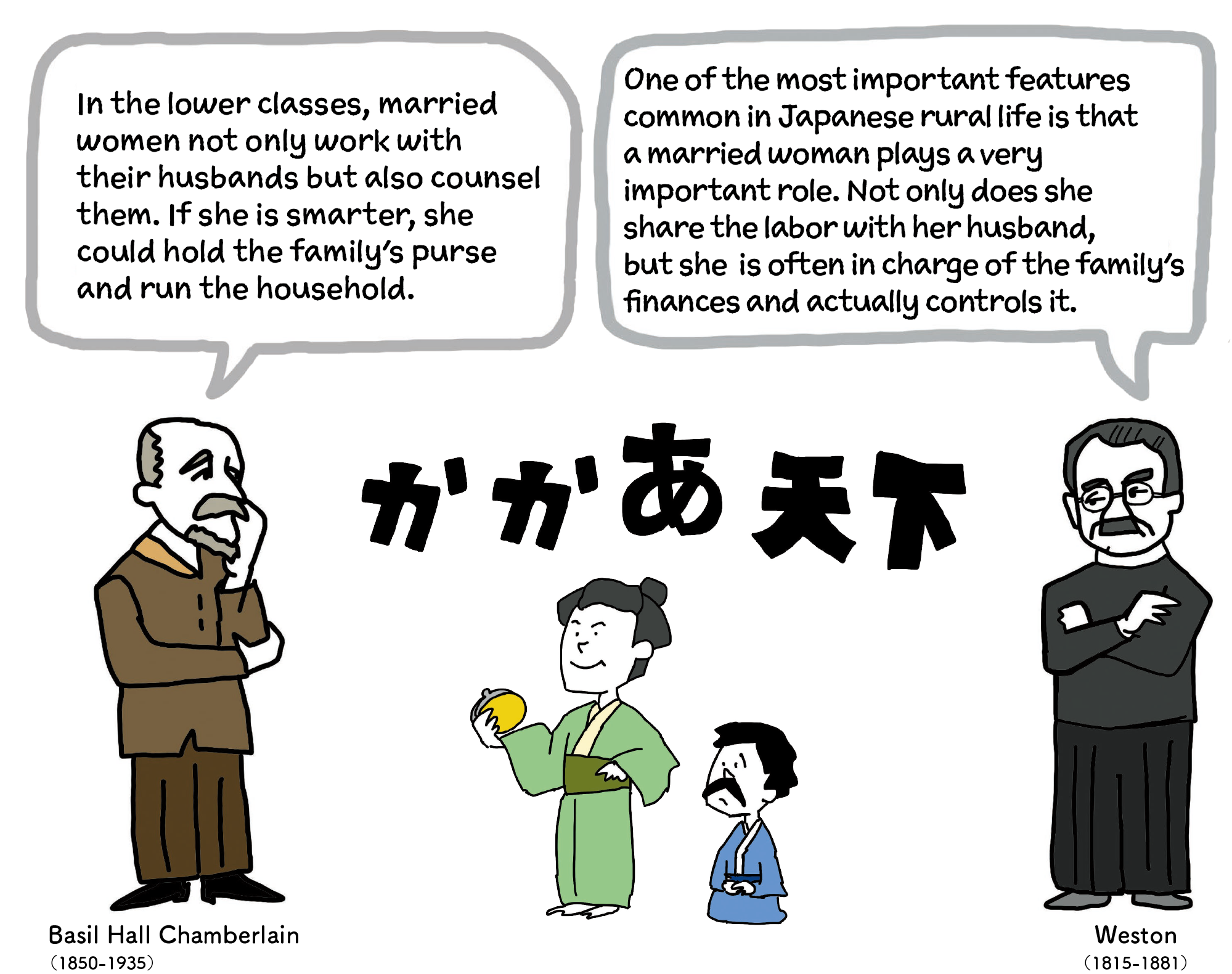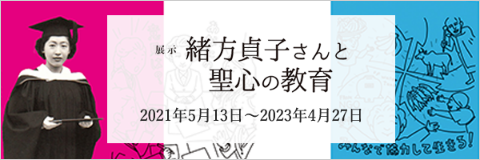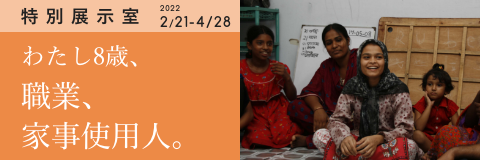Three hundred years ago, during the mid Edo era, it was not unusual for women to get married at the age of 18. However, since the end of the Edo era to the beginning of the Meiji era, the average age of women’s first marriage steadily rose. By the end of the Edo and Meiji eras, Japanese society was gradually moving away from the "a state of child marriage", with more and more people marrying late.
There were many reasons behind the tendency to marry late. One of them being the increase in the number of women who migrate to work outside their homes and villages to earn money.
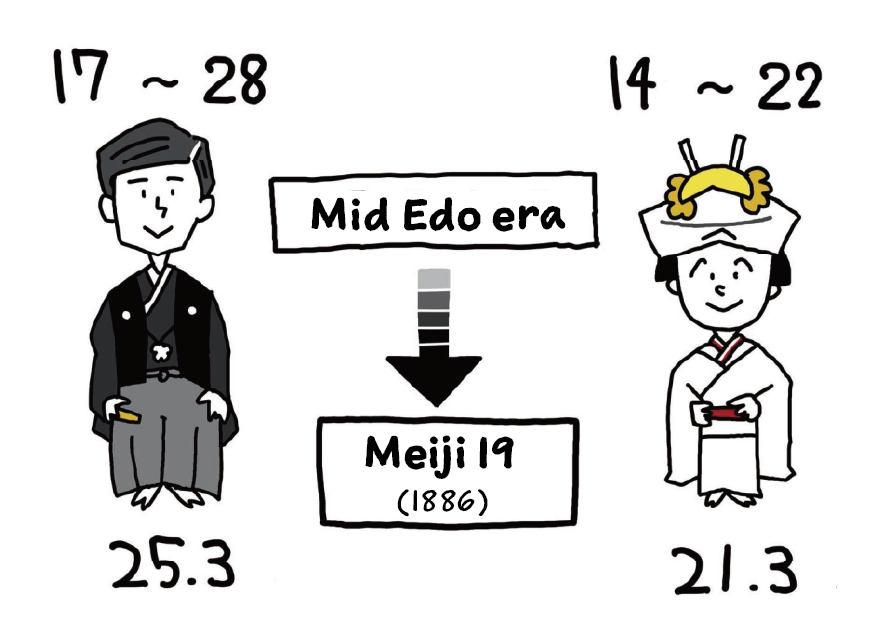

According to the research results of historical demography, the average age of first marriage was 17–28 for men, and 14–22 for women in the mid Edo era, based on regional differences. In 1886, the average age of marriage was 25.3 for men and 21.3 for women, while from the end of the Edo era to the beginning of the Meiji era, the tendency to marry late was observed among women in many regions. The above graph shows the research results for 43 villages in the Noubi region.

- The number of migrant women workers who worked outside to earn money had increased.
- Reference : Akira Hayami. 1979. “Introduction to Historical and Demographic Studies in the Noubi Region.” The Tokugawa Institute for the History of Forestry. Research proceedings 1988.









